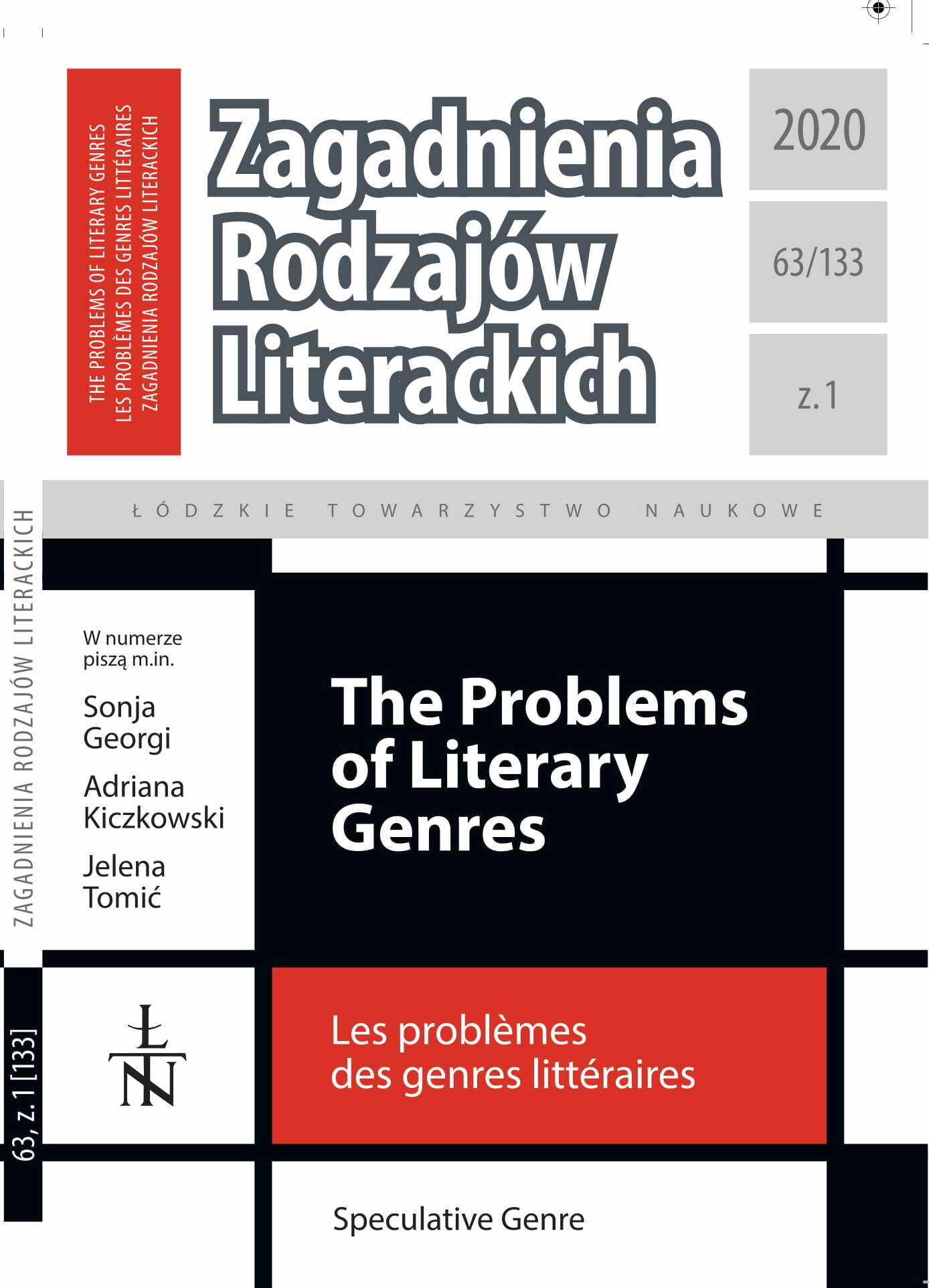Female Cyborgs, Gender Performance, and Utopian Gaze in Alex Garland’s Ex Machina
DOI:
https://doi.org/10.26485/ZRL/2020/63.1/3Słowa kluczowe:
science fiction film, Ex Machina, Donna Haraway, female cyborg, homework economyAbstrakt
The cyborg as a metaphor for cultural encodings of the interaction between humans and technology has been an accepted trope since the publication of Donna Haraway’s “Cyborg Manifesto.” Alex Garland’s 2015 film Ex Machina shares many of its key themes and motifs with earlier science fiction films, from Fritz Lang’s Metropolis to Ridley Scott’s Blade Runner. A first viewing of the film thus suggests an interpretation that focuses on the film’s portrayal of its female cyborgs Ava and Kyoko as another version of the “pleasure model” in the mode of Lang’s Maria or Scott’s Pris. However, it is the tension between Ava’s intelligence and visual attractiveness and her performance of a female gender identity that invites a closer investigation of the film’s visual encoding of the female cyborg. As the film shifts its focus from the young male programmer Caleb and his encounter with his employer Nathan and the cyborg Ava to Ava’s self-portrait, this chapter will take a closer look at the embodiment of cyborg identity.
Liczba pobrań
Bibliografia
Ashcroft Bill, Griffiths Gareth, Tiffin Helen (1989), The Empire Writes Back: Theory and Practice in Post-Colonial Literatures, Routledge, London.
Brooker Will (ed.) (2005), The Blade Runner Experience: The Legacy of a Science Fiction Classic, Wallflower Press, London.
Butler Judith (2006), Gender Trouble, Routledge, London.
Chun Wendy (2003), Orienting Orientalism, or How to Map Cyberspace [in:] Asian America. Net: Ethnicity, Nationalism and Cyberspace, eds. Lee R., Wong S., Routledge, London.
Ferrando Francesca (2013), Posthumanism, Transhumanism, Antihumanism, Metahumanism, and New Materialisms: Differences and Relations, Existence, vol. 8, no. 2.
Gold Hannah K. (2015), Fembots Have Feelings Too, https://newrepublic.com/article/121766/ ex-machina-critiques-ways-we-exploit female-care [access: 7.07.2020].
Haraway Donna (2000), A Cyborg Manifesto: Science, Technology, and the Socialist-Feminism in the Late Twentieth Century [in:] The Cybercultures Reader, eds. Bell D., Kennedy B.M., Routledge, London.
Hom Sabrina (2008), Housekeepers and Nannies in the Homework Economy: On the Morality and Politics of Paid Housework [in:] Global Feminist Ethics, eds. Des Autels P., Whisnant R., Rowman and Littelfield, Lanham Boulder.
Leyda Julia (2017), Cute Twenty-First-Century Post-Fembots [in:] The Aesthetics and Affects of Cuteness, ed. Dale J.P. et al., Routledge, New York.
McCaffery Larry (1991), The Desert of the Real [in:] Storming the Reality Studio, ed. McCaffery L., Duke UP, Duke.
Musap Emilia (2018), Why is ‘It’ Gendered — Constructing Gender in Alex Garland’s Ex Machina (2015), “Anafora”, vol. 2.
Nakamura Lisa (2002), Cybertypes. Race, Ethnicity, and Identity on the Interneti, Routledge, New York.
Said Edward (2004), Orientalism, 25th ed. Vintage Books, New York.
Schonfeld Zach (2015), Alex Garland on the Strange Ease of Directing Ex Machina, https:// www.newsweek.com/alex-garland-shares-best-part-directing-ex-machina-324686 [access: 7.07.2020].
Smelik Anneke (2016), Film [in:] The Cambridge Companion to Literature and the Posthuman, eds. Clarke B., Rossini M., Cambridge UP, Cambridge.







